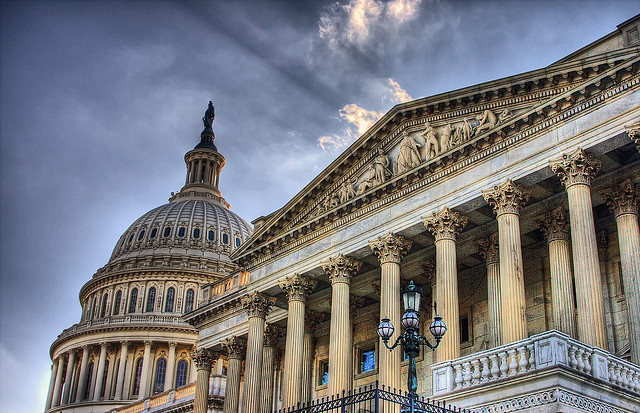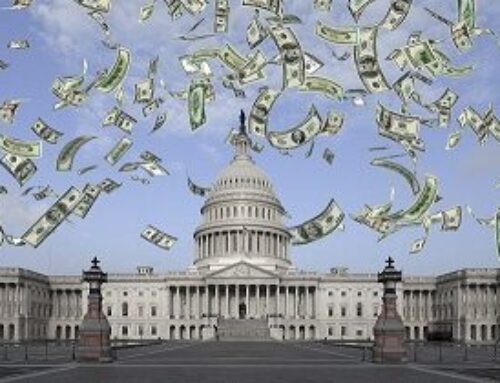Today marks the end of fiscal year 2015 for U.S. taxpayers, and for me, as the leader of a budget group, this is always a time for both reflection and looking ahead. Here are some highlights and lowlights of the fiscal year that was – and predictions on the one to come.
As a starting point, I want to flag a fiscal event garnering less attention than the current machinations in Congress. Sept. 30, 2015, marks the completion of the Recovery Accountability and Transparency Board, arguably the most successful large-scale effort to track spending, identify abuses and mistakes and prevent fraud since the Truman Committee during World War II. (Full disclosure – the original head of the Recovery Board, Earl Devaney, is a member of Taxpayers for Common Sense Board of Directors.) The board was created as part of the 2009 stimulus to ensure that the high levels of spending and investment were properly channeled and to inspire public confidence in the process. It succeeded on both counts – and more importantly, proved that with the right tools, we can actually track federal spending, identify and fix problems and root out the bad apples that so often dominate news coverage of taxpayer investments.
While the board was scheduled to conclude a few years ago, it was extended to track Superstorm Sandy relief funds. Yet while the tracking mandate in the Recovery Act was critical to the success of oversight efforts, Congress didn't require Sandy funds to be tagged as such, making these funds difficult to track. Thus the experience of the board has proven that government funding can be tracked and the resulting information provided to the public in a usable way, but the Department of Treasury has not built on the lessons of Recovery Act reporting, instead sliding backward into long-held habits that do not prioritize making annual spending and outlays easily available.
 Moving back to more high-profile headlines. Let's begin with the good news on this fiscal New Year's Eve: It is pretty certain that we will avoid a government shutdown, at least for the first couple months of the new fiscal year. This can only be good news in an era of unbelievably low expectations of Congress, particularly since the only reason we'll avoid a shutdown in the near term is the enactment of a temporary Continuing Resolution that will keep the lights on through Dec. 11. The top of the list of bad news from the last fiscal year is that we have to have these stop-gap measures at all, a bad omen for the next fiscal year. After a short-term continuing resolution was passed last year (believe it or not, going through Dec. 11, 2014), Congress rolled the bulk of the spending bills into one Frankenstein-esque “cromnibus,” extending existing spending levels for the Department of Homeland Security while allocating specific new levels for other agencies. (Later in the year DHS received full-year appropriations.) Looking through the lens of low expectations, a cromnibus is better than several shorter-term continuing resolutions.
Moving back to more high-profile headlines. Let's begin with the good news on this fiscal New Year's Eve: It is pretty certain that we will avoid a government shutdown, at least for the first couple months of the new fiscal year. This can only be good news in an era of unbelievably low expectations of Congress, particularly since the only reason we'll avoid a shutdown in the near term is the enactment of a temporary Continuing Resolution that will keep the lights on through Dec. 11. The top of the list of bad news from the last fiscal year is that we have to have these stop-gap measures at all, a bad omen for the next fiscal year. After a short-term continuing resolution was passed last year (believe it or not, going through Dec. 11, 2014), Congress rolled the bulk of the spending bills into one Frankenstein-esque “cromnibus,” extending existing spending levels for the Department of Homeland Security while allocating specific new levels for other agencies. (Later in the year DHS received full-year appropriations.) Looking through the lens of low expectations, a cromnibus is better than several shorter-term continuing resolutions.
Looking ahead to fiscal year 2016, it is, of course, already too late to hope for timely appropriations bills passed in regular order. (And in case you've forgotten, there are lots of reasons why it's so much better for taxpayers if the appropriations process works as designed). And while we have averted a shutdown for the time being, there remains the distinct possibility that Congress won't come to agreement in December, and then we'll see a shutdown. If we do, it will be yet another waste of important resources, time and attention. What's more, it is likely that fiscal year 2016 will include yet another deferral of the fiscal discipline promised by the Budget Control Act of 2011. To refresh your memory, in 2011, Congress passed the Budget Control Act, which mandated a “Super Committee” come up with $1.2 trillion in deficit reduction or face spending limits for 10 years. If Congress passed bills that exceeded the spending caps, automatic, across-the-board cuts knows as sequestration would be implemented. In 2013, Congress amended the Budget Control Act to allow room for a little more spending in fiscal years 2014 and 2015, using gimmicks and offsets to “pay” for the adjustment. That amendment, known as the Ryan-Murray deal, or the Bipartisan Budget Agreement of 2013, set spending limits for fiscal 2014 and fiscal 2015. Fast forward to the budget debates for fiscal 2016: The president's budget proposal simply ignored the spending caps, and Congress, despite having the same party in power in both chambers, has been unable to keep the appropriations process on track – a problem unrelated to the headlines about Planned Parenthood – largely because of pressures to increase Pentagon-related spending levels.
All of this turmoil leads me to believe the best we can hope for this year is an omnibus spending bill that maintains the Budget Control Act's spending caps. More likely, I expect another shutdown showdown, at least one more stop-gap spending bill and yet another deferral or gimmicky runaround of the savings Congress agreed to back in 2011.
I hope this fiscal year my fears prove to be wrong and that new congressional leadership looks to solve our fiscal problems rather than simply deferring solutions once again.
Photo credit: vgm8383 via flickr











Get Social